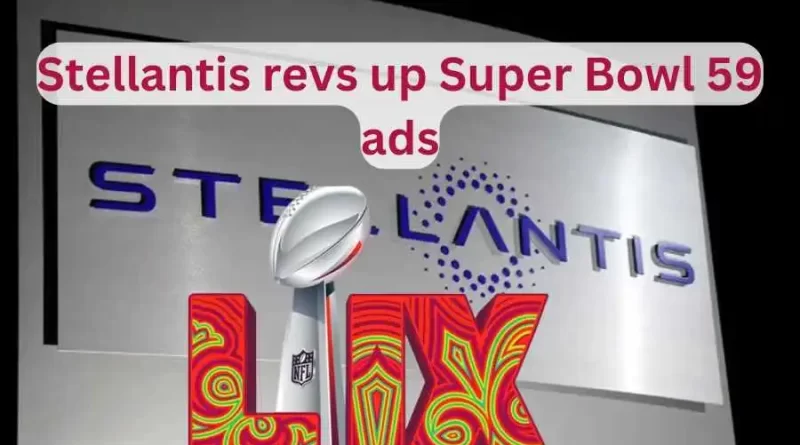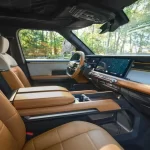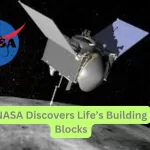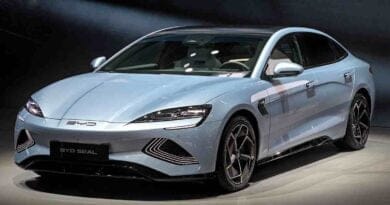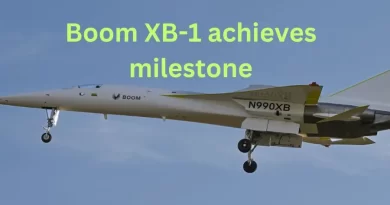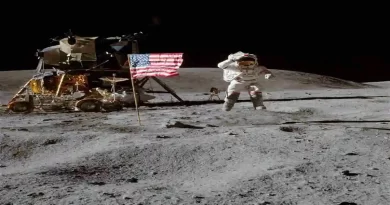Stellantis revs up Super Bowl 59 ads after CEO exit
For the Super Bowl 59 commercial, automotive has been one of the top sections. No wonder, Fiat Chrysler, now Stellantis, decided to stay put in the ad platform as a recommitment to the automaker’s US business.
Amid cost-cutting and industry uncertainty, the results followed in the form of advertising at the Super Bowl, while other automakers retracted. The company is known for its nontraditional ads featuring celebrities, which it claims, goes beyond selling the vehicles.
According to a claim made by Stellantis Chief Marketing Officer Olivier Francois, there were three main reasons for Stellantis’s comeback. Among them, a company’s U.S. revival, electrical vehicles that made the industry run on automatic mode rather than to be manually operated plus a CEO’s exit, all played a role in making the automaker stand strong.
Stellantis is succeeded by Jeep and Ram vehicle brands and as per Francois, amid abandonment by other automakers, the battle-hardened Atlantic automaker’s revival was part of the commitment to its business. Francois also added that the ad came after Stellantis Chairman John Elkann, a scion of Italy’s Fiat carmaker, talked to him in the backdrop of CEO Carlos Tavares suddenly leaving the company.
Francois while talking to a news channel said, “We were not set to make a commercial. John Elkann called me in December, saying, you know, ‘I want something. I want to make a comeback. We want to show, to express, that comeback story. We want to show America how much it is important to the Stellantis group.’”
After the 2009 bankruptcy of the vehicle manufacturing company, attempts were made to make a comeback and in 2011 a two-minute ad was sponsored featuring rapper Eminem. In the backdrop of Detroit city, the message seemed to click in, as the city is known to be the originator of the car manufacturing hub. Therefore, it translated into the creation of an ad resonating with the city’s steely resolve. Chrysler sedan known as the 200 which is not in vogue nowadays, is also featured in it.
Mirroring the spirit of late Fiat Chrysler CEO Sergio Marchionne, Francois was told by Elkann as per the latter’s statement to create this year’s company ads. In 2018, Marchionne passed away and had been a supporter of Francois’s earlier Super Bowl ads. Again, as per Francois, following years of lackluster sales and cost-cutting in the U.S., he was told by Elkann, who is searching for a new CEO, to recapture the same comeback spirit.
For Francois, his two-minute Jeep ad starring ‘Star Wars’ and ‘Indiana Jones’ actor Harrison Ford was sort of a comeback for himself as well. Francois’s earlier ads include among others, actors like Clint Eastwood, Bill Murray and singer Bob Dylan after featuring Eminem. As per Francois, in early December, the Jeep ad was shot over two days in Santa Clara, California, featuring Ford.
Tradition seemed to have gotten prominence in Stellantis ads
Sidelining the actual theme of showcasing any specific vehicle, the earlier ads discussed culturally relevant topics such as political divides and patriotism. Tradition also gained a hand while featuring ads for Stellantis’ Ram Trucks, with actor Glen Powell going gaga in the comic scenes while re-imagining ‘Goldilocks and the Three Bears’ with trucks.
Jeep Super Bowl’s iconic ad brings the message straightforwardly, touching the consumer chords. Especially, when Ford appeals in the end about being the person in charge of one’s own life. He refers to the particular brand while another rival vehicle brand passes by, “choose what makes you happy. My friends, my family, my work make me happy. This Jeep makes me happy — even though my name is Ford. That’s my owner’s manual. Get out there, write your own.”
Referring to the latest Ford Bronco SUV which is seen passing, the actor talks about the inspiration one gets upon knowing the great lives of the heroes and people. According to Francois, Ford had turned down an earlier ad and said that agencies are hired by the CMOs to write scripts and form the ads. But it is a fact that the original idea comes from these executives.
Talking about the heroes who write their own stories in the absence of an ‘owner’s manual’, he encourages customers to do the same, inspiring others with his own example. In a statement later, Ford says, “I said ‘yes’ to doing this commercial because of the script.
It’s a very straightforward communication about life and ends with getting in a Jeep vehicle, that’s the hook. It didn’t require me to reintroduce myself, point to the fact that in my life I’ve been many things and known for specific projects or roles.” He added, “It’s just a quiet talk from somebody sharing an idea. I love the way it developed.”
Advertising before an actual product hits the market is what, Francois believes, makes the automotive companies go off board. He cites the example of EVs when the vehicle wasn’t even available in the markets and the companies during the earlier years went ahead with the advertising. He said, “In the last years, there were plenty of automakers, all of them (touting) EVs, EVs that didn’t even exist.”
And added again, “These guys are obviously running like headless chickens: EVs, EVs, EVs. I mean, that’s where we all were.” It was only Stellantis that featured in the ad during Sunday’s game, with other vehicle brands like Toyota and other automakers regularly advertising only during the NFL regular season. Sponsorships were also advertised in the case of Toyota, talking about its’ official automotive partnership with the NFL.
Lack of payoff in the earlier years was another reason behind the non-participation by other automakers in the Super Bowl ad, according to Francois. Like other automakers, Stellantis too was advertising, riding high on the EV bandwagon as per him, even when the actual sale was absent. During the recession years of 2008 and 2009, companies like Toyota Motor, Hyundai Motor and Audi featured in the ads, despite the industry being hit hard.
Plug-in hybrid models like the Jeep Wrangler, according to Francois, were advertised showcasing the vehicle along with the earlier versions of internal combustion engine-based vehicles. This was apart from the EVs featured in both of the Stellantis Super Bowl ads.
According to Francois, it was a blessing in disguise that Elkann called him in December rather than earlier, which gave him a short time frame to complete the ads. However, the hurry gave him an impetus to create a relevant message in the ad, giving preference to the message rather than talking just about the EVs.
There was no disclosure of the amount spent on the ad production or broadcast by Stellantis. In any case, during Super Bowl 59, the ads were selling for up to $8 million for 30 seconds of air time. That not being an issue for Elkann, he, as per Francois, talked to advertising and marketing leaders at Stellantis about, “Marketing is no longer a cost. It is an investment.”
Francois added, “The moment had changed, and I was lucky enough to have the possibility to rewrite the scripts. To rewrite history, to say, do not run like a headless chicken,” ending with, “I was able to improvise at the moment.”

